Why you can trust Tom's Hardware
Comparison Products
The Corsair MP600 Core XT faces stiff competition in our test suite, including the Adata Legend 960 Max, the Samsung 990 Pro, the WD Black SN850X, the Corsair MP600 Pro LPX, the Acer Predator GM7000, the Lexar Professional NM800 Pro, the Addlink S90 Lite, the Solidigm P41 Plus, and the Corsair MP700.
Trace Testing - 3DMark Storage Benchmark
Built for gamers, 3DMark’s Storage Benchmark focuses on real-world gaming performance. Each round in this benchmark stresses storage based on gaming activities including loading games, saving progress, installing game files, and recording gameplay video streams.
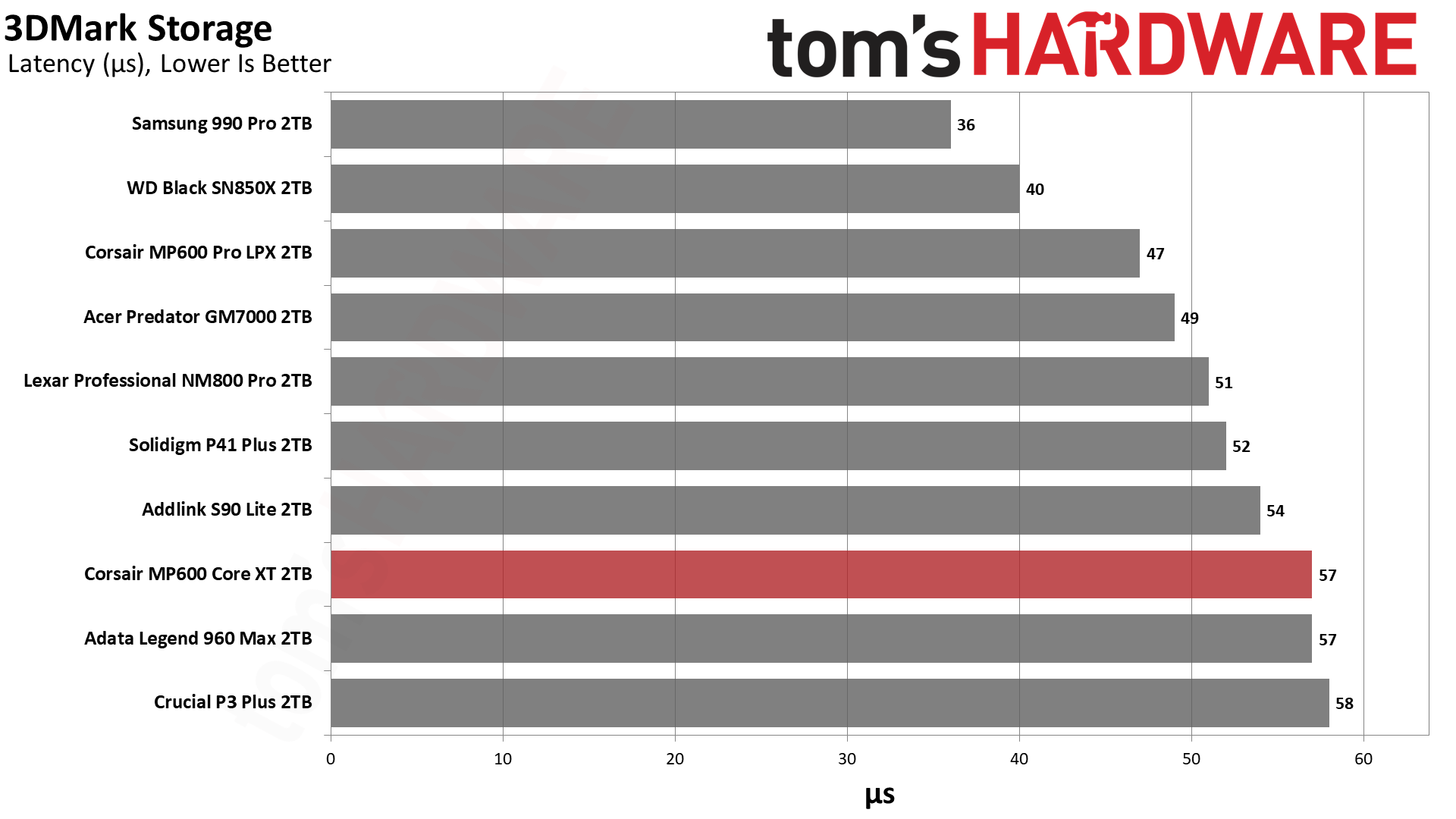

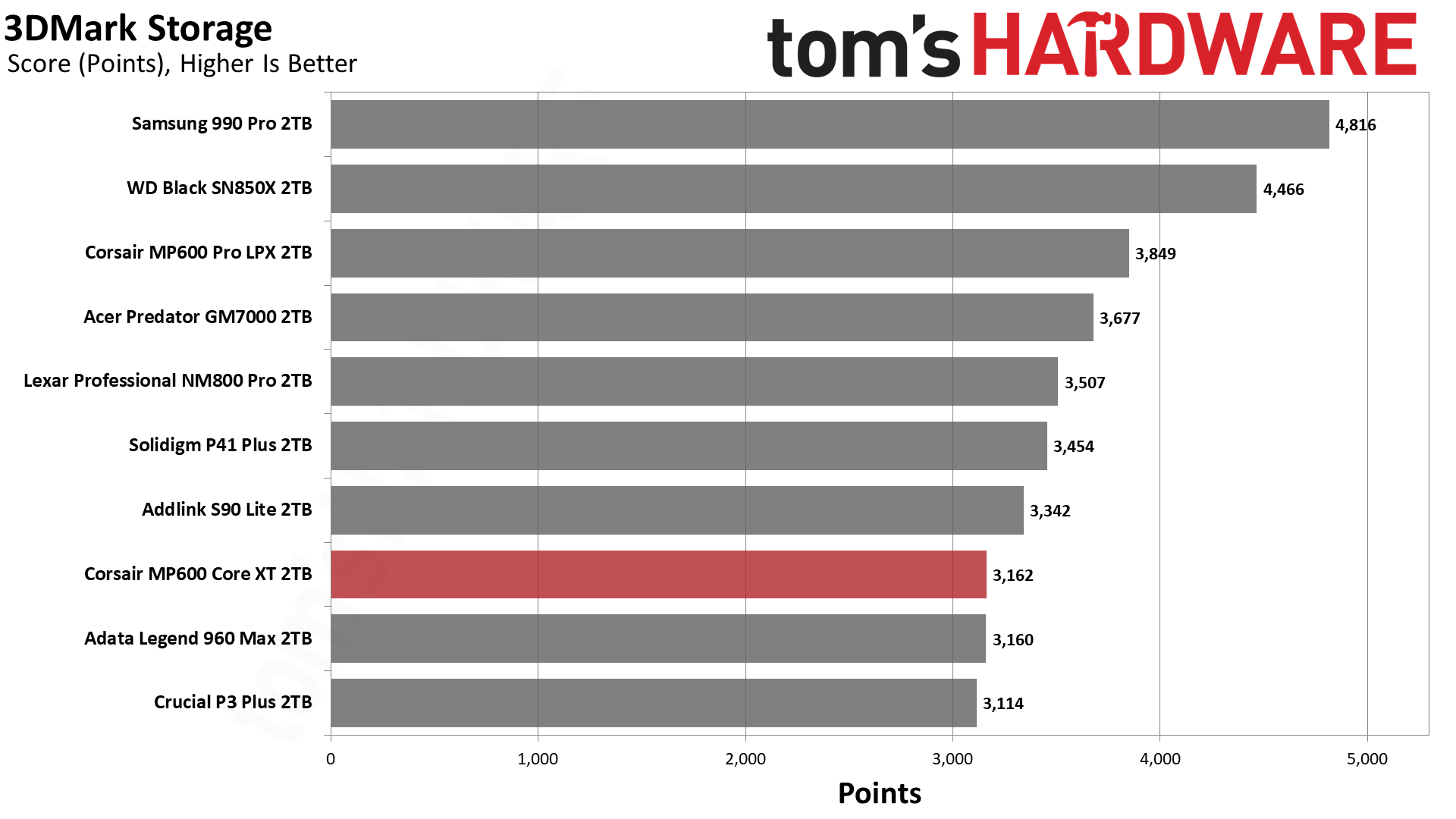
The MP600 Core XT does pretty poorly in 3DMark, but surprisingly beats the Legend 960 Max.
Trace Testing – PCMark 10 Storage Benchmark
PCMark 10 is a trace-based benchmark that uses a wide-ranging set of real-world traces from popular applications and everyday tasks to measure the performance of storage devices.
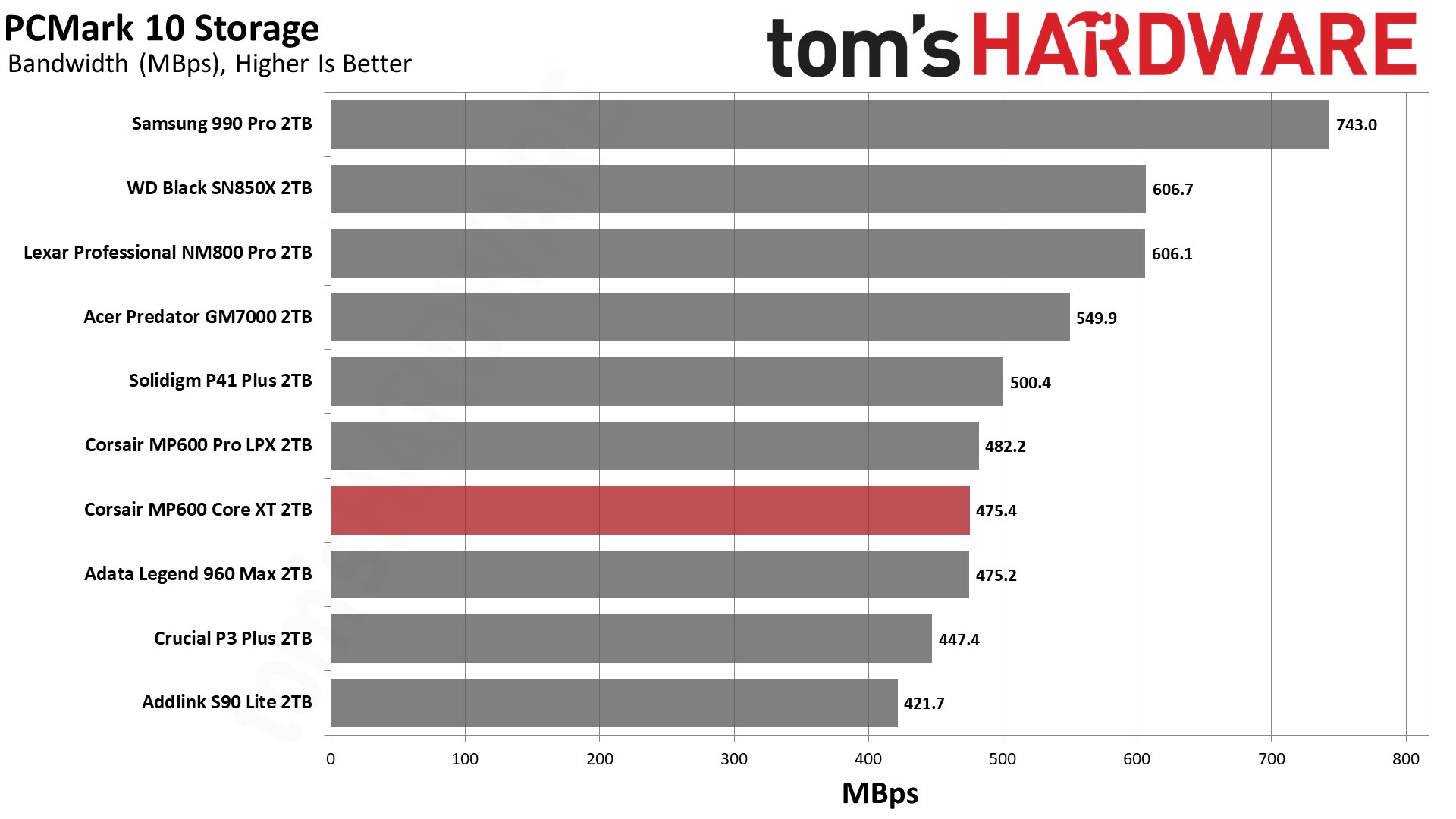


In PCMark 10 the MP600 Core XT beats the 960 Max again, but also the S90 Lite.
Transfer Rates – DiskBench
We use the DiskBench storage benchmarking tool to test file transfer performance with a custom, 50GB dataset. We copy 31,227 files of various types, such as pictures, PDFs, and videos to a new folder and then follow-up with a reading test of a newly-written 6.5GB zip file.
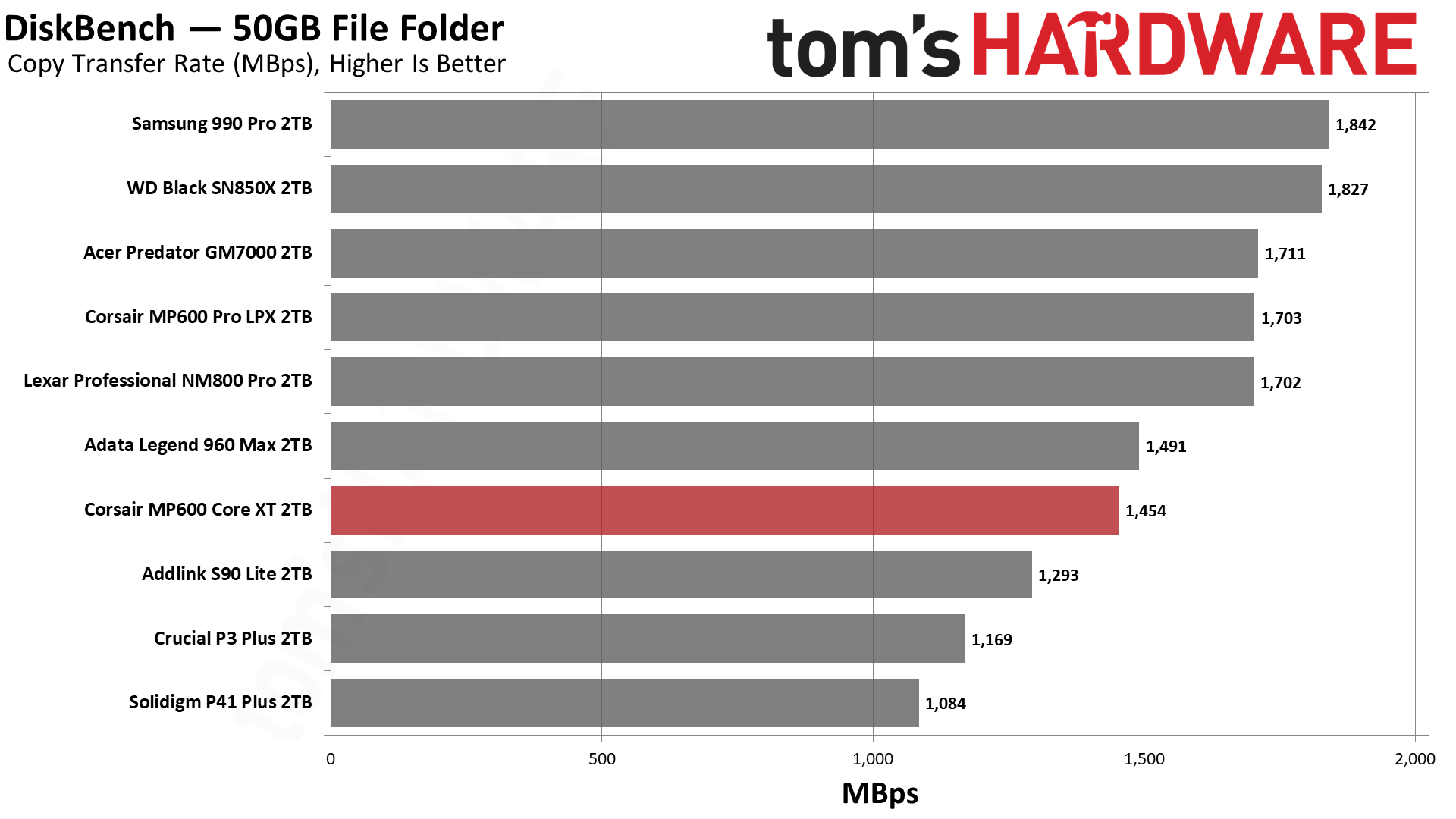
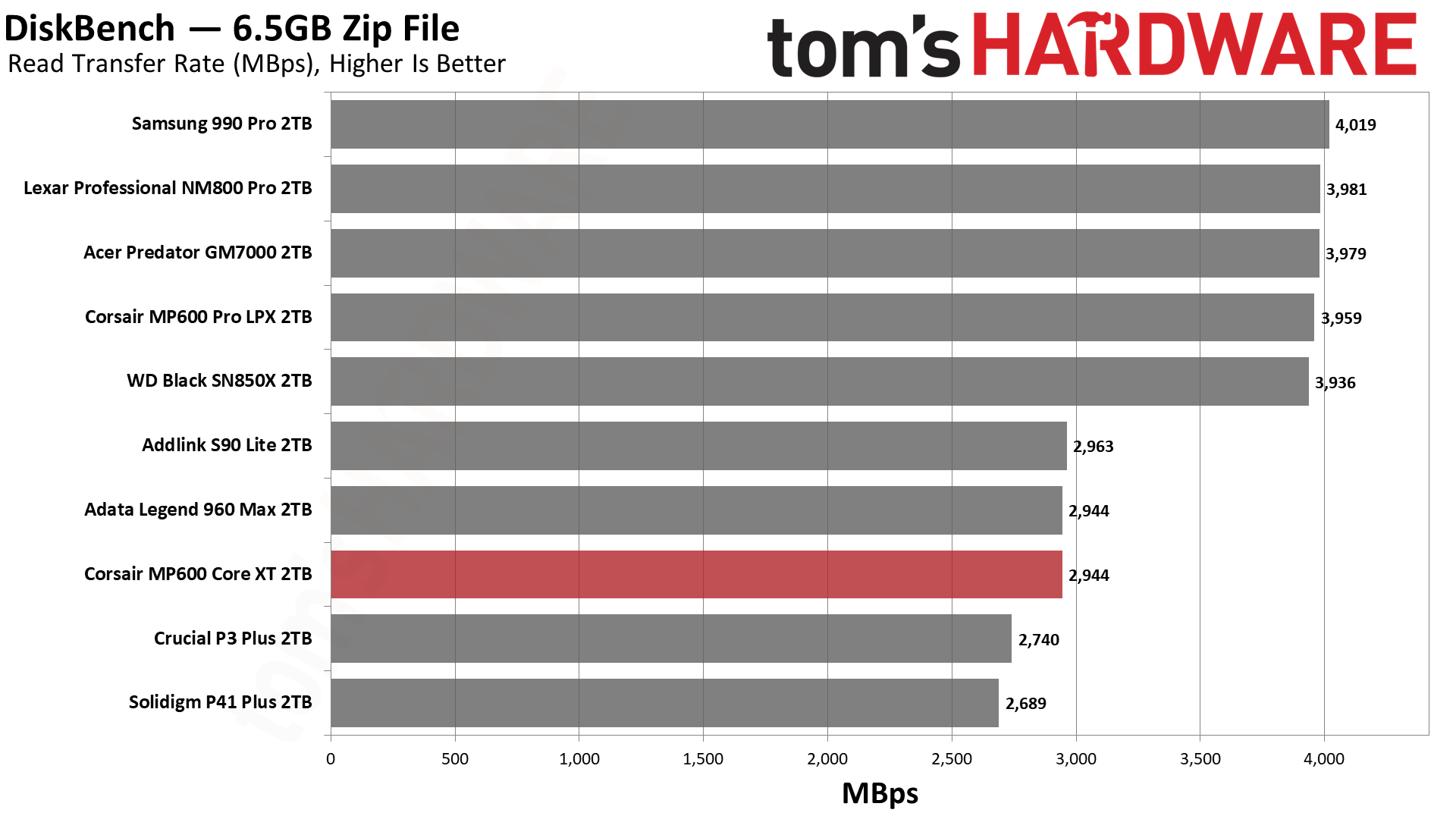

In DiskBench we are looking mostly at copy performance and the MP600 Core XT is faster than the S90 Lite and P41 Plus, the latter being another popular QLC drive.
Get Tom's Hardware's best news and in-depth reviews, straight to your inbox.
Synthetic Testing - ATTO / CrystalDiskMark
ATTO and CrystalDiskMark (CDM) are free and easy-to-use storage benchmarking tools that SSD vendors commonly use to assign performance specifications to their products. Both of these tools give us insight into how each device handles different file sizes.
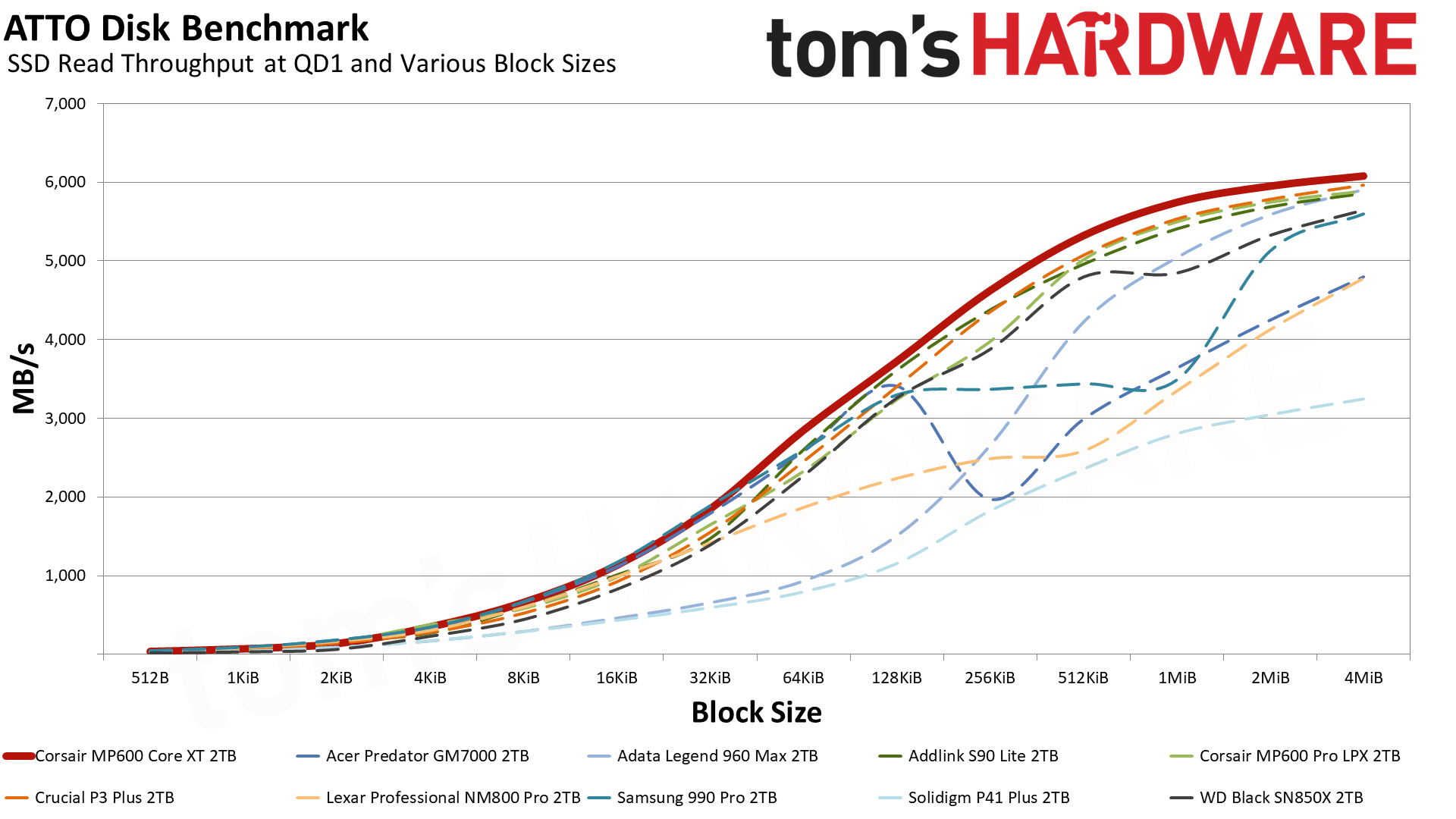
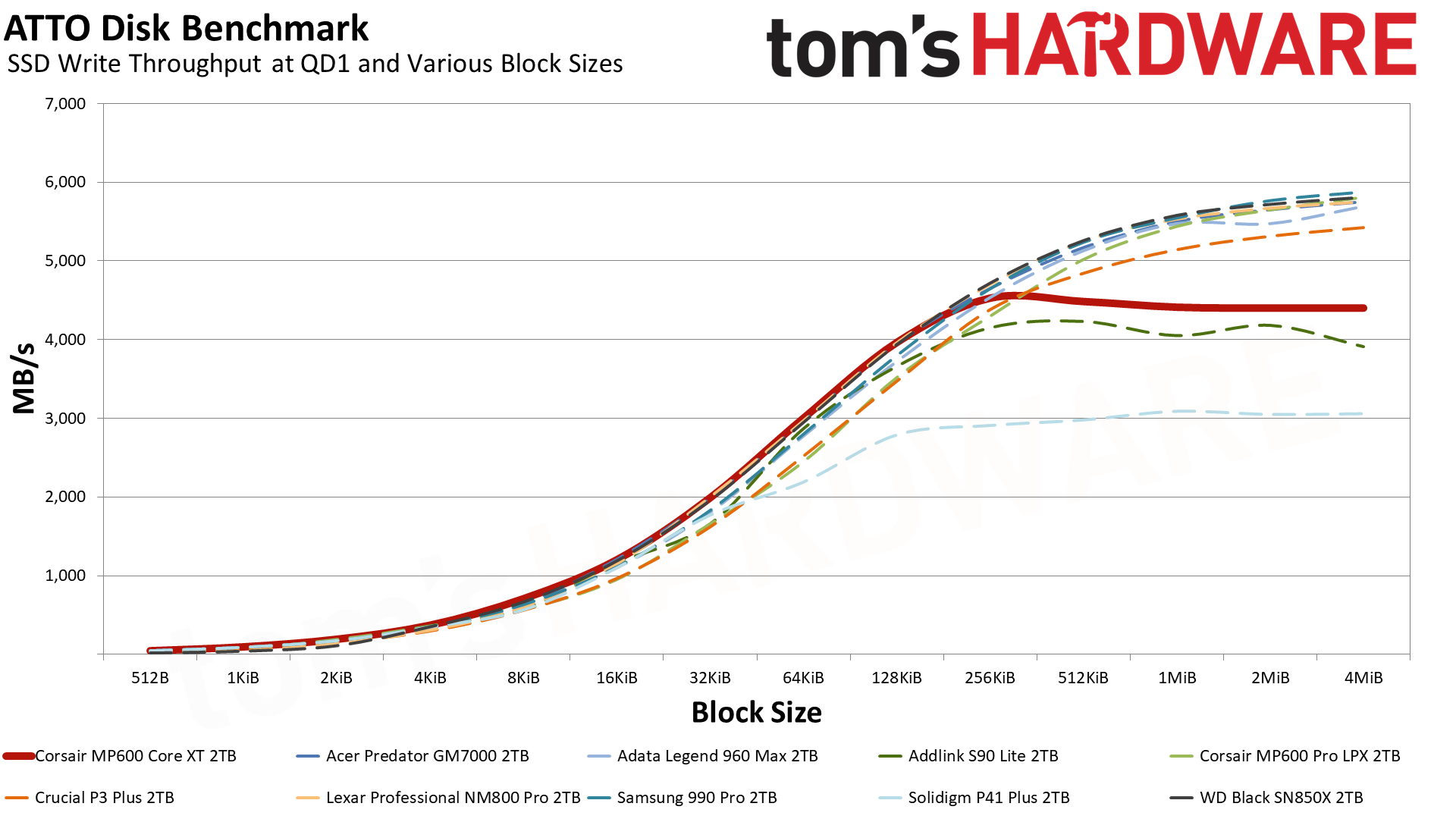

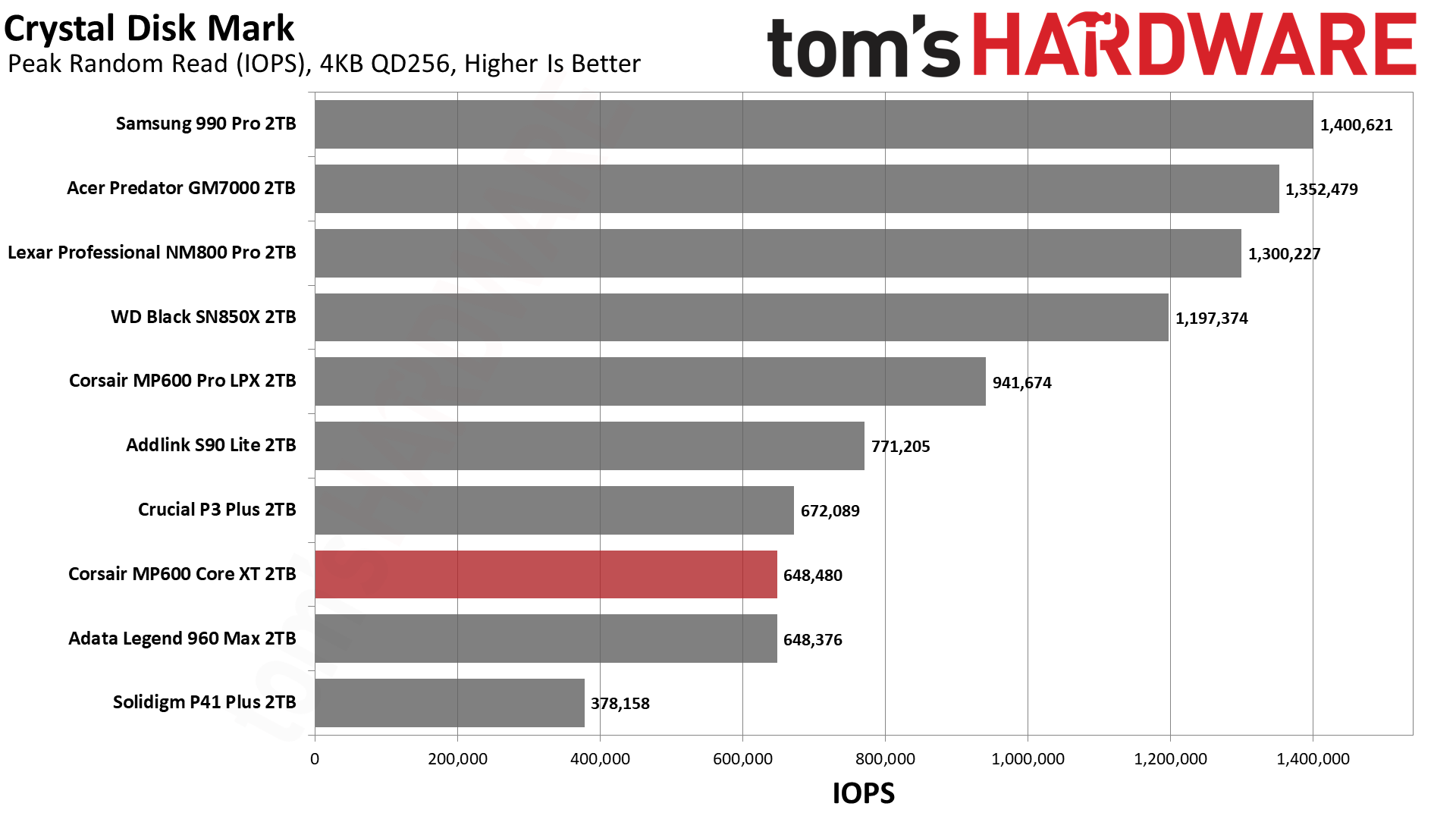
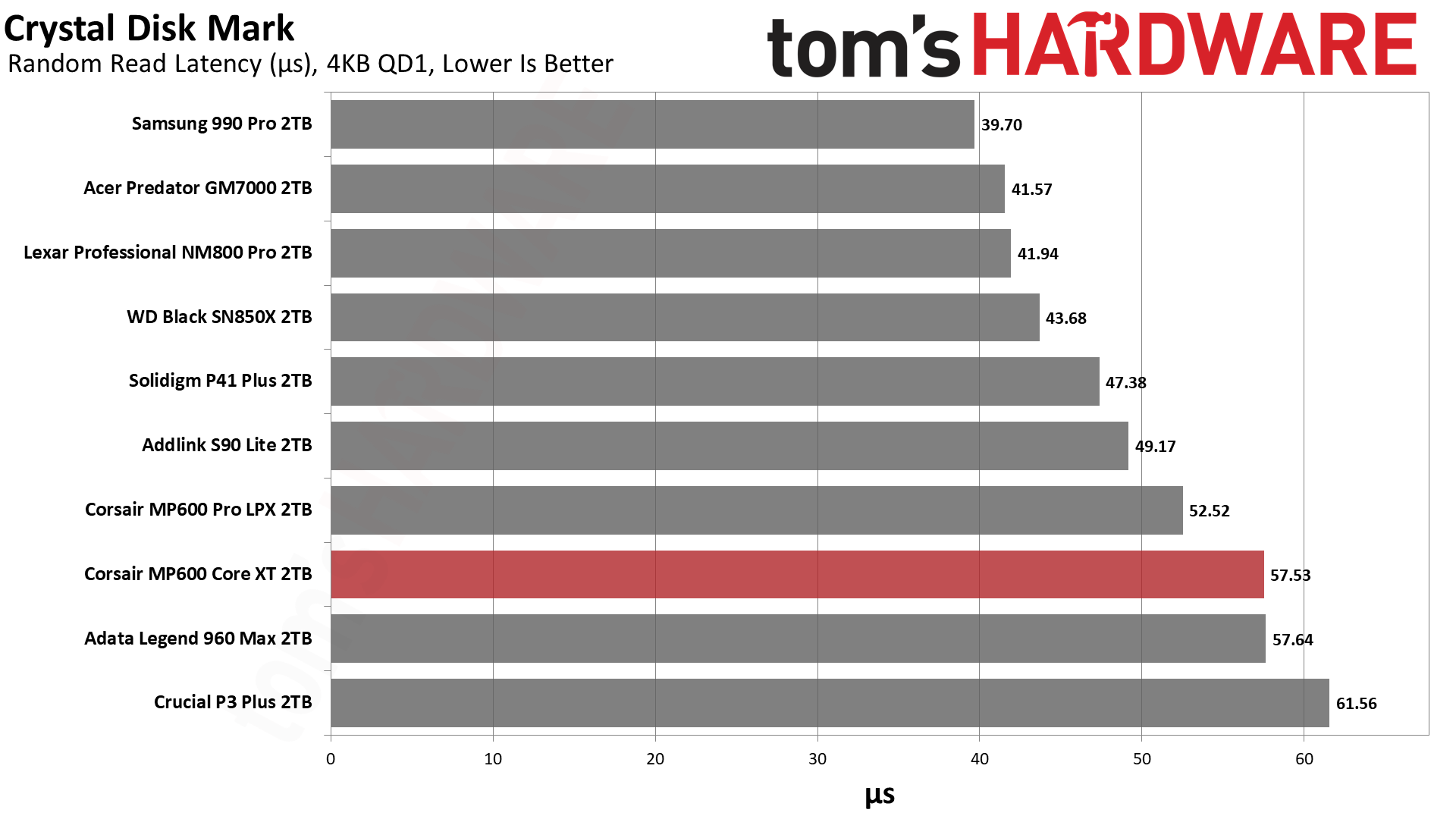
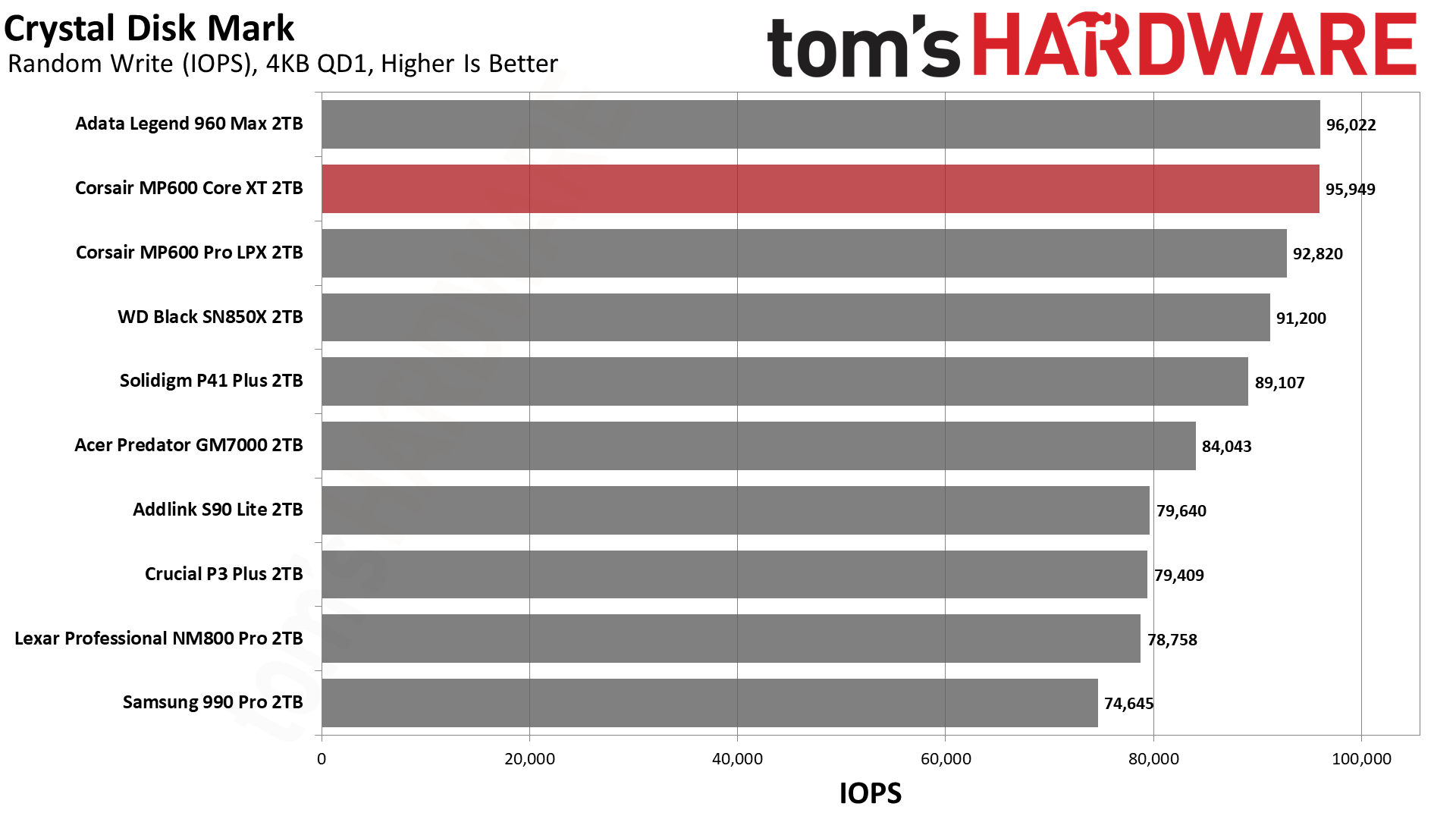
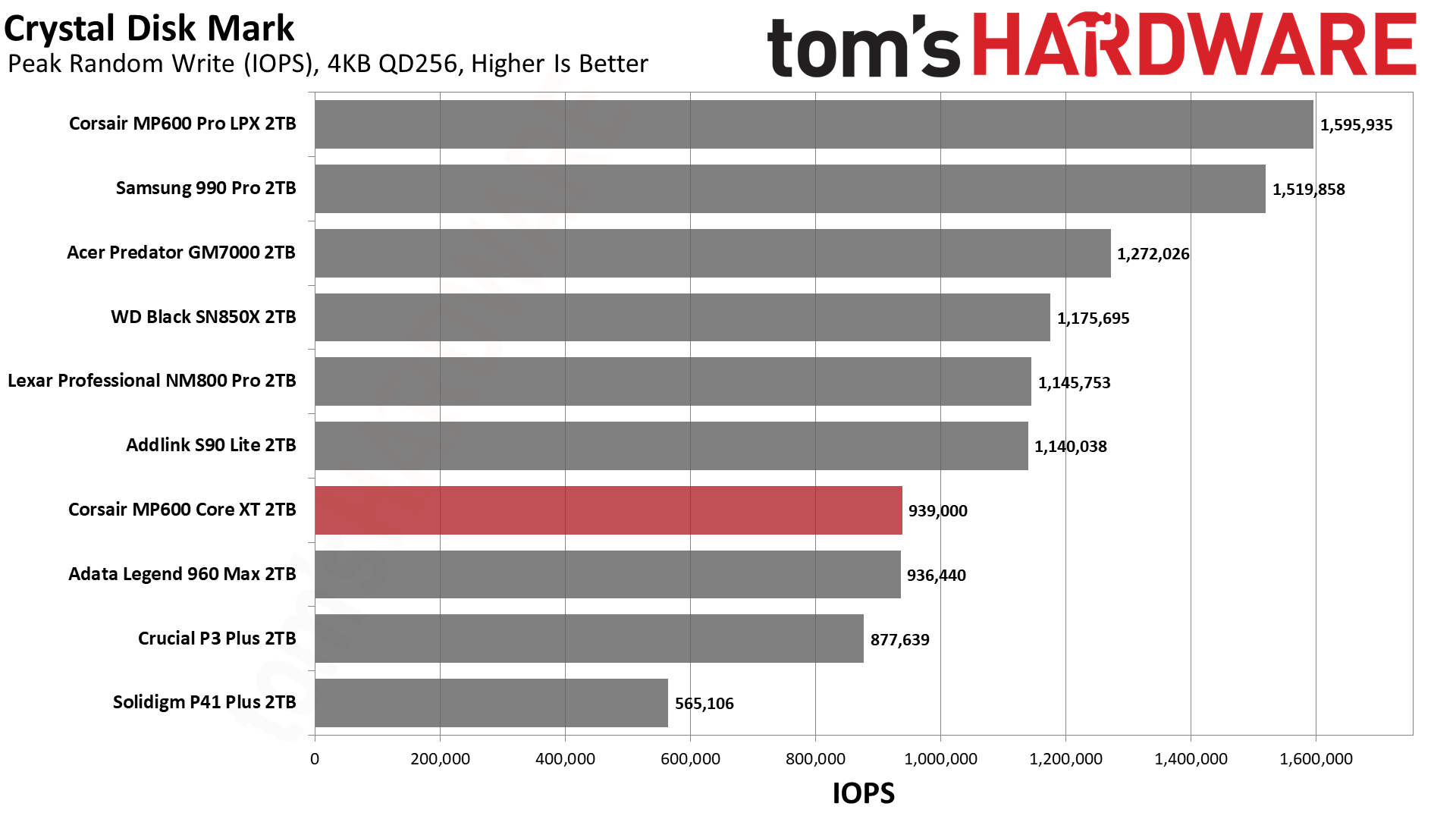


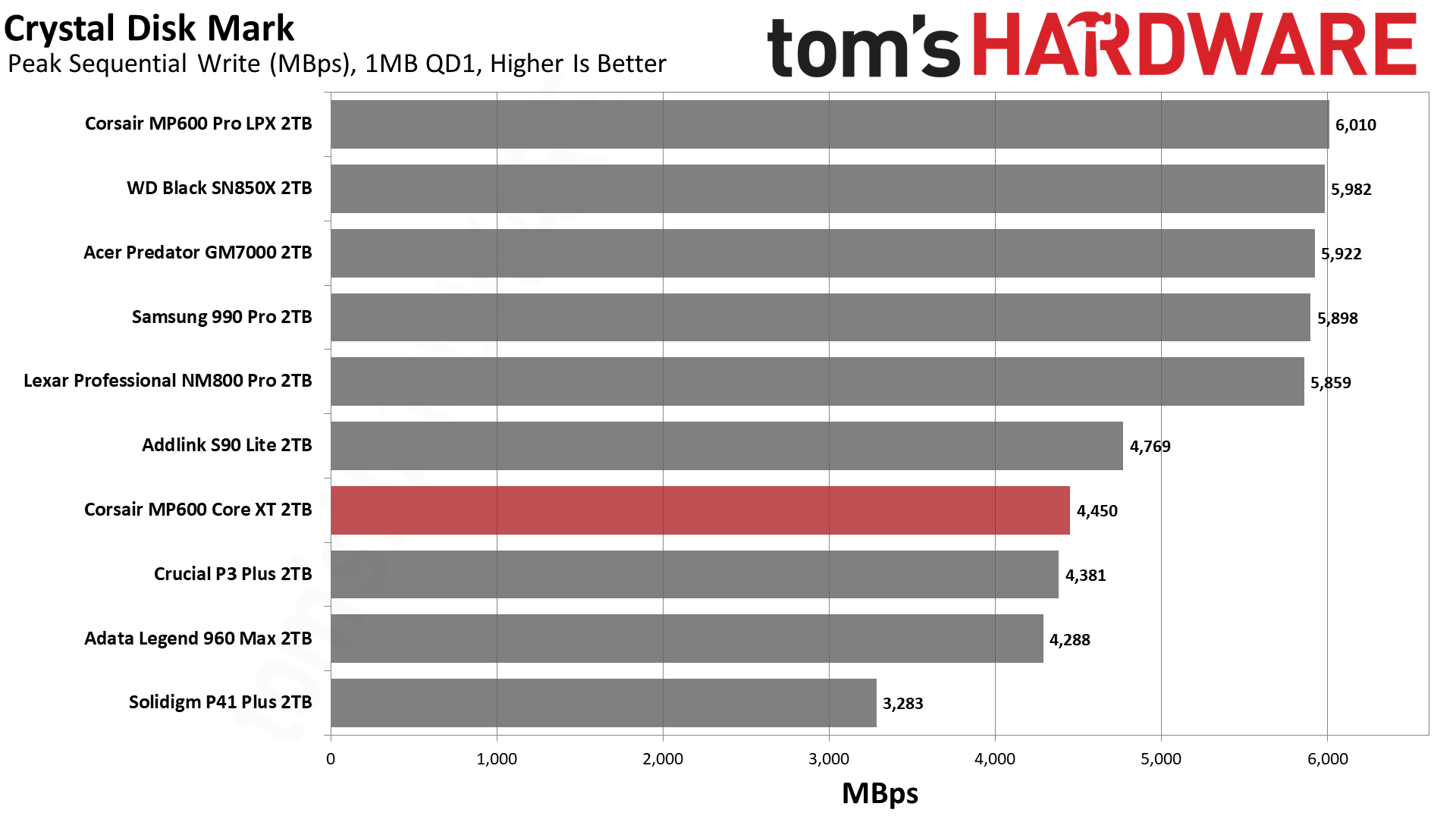
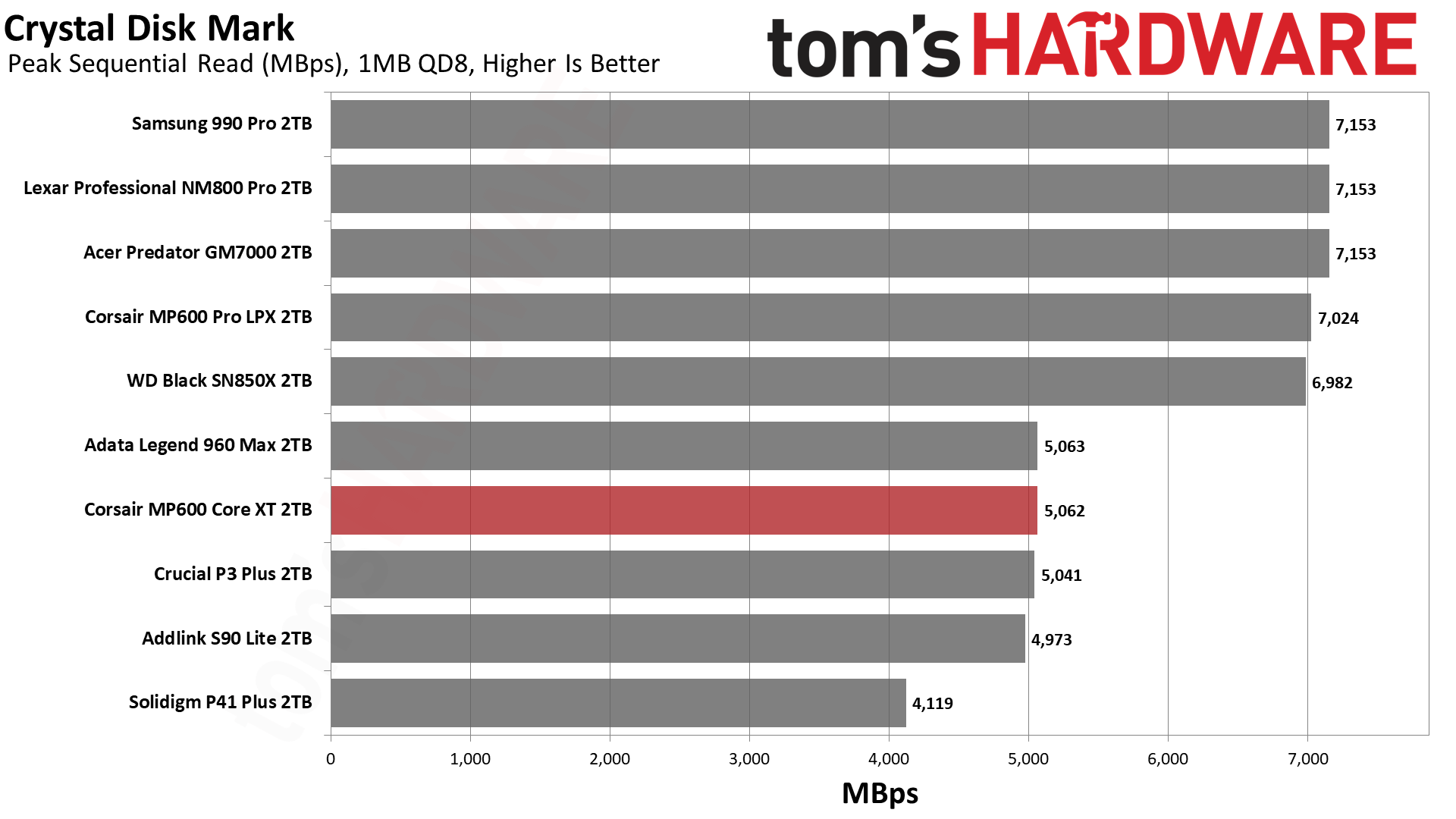
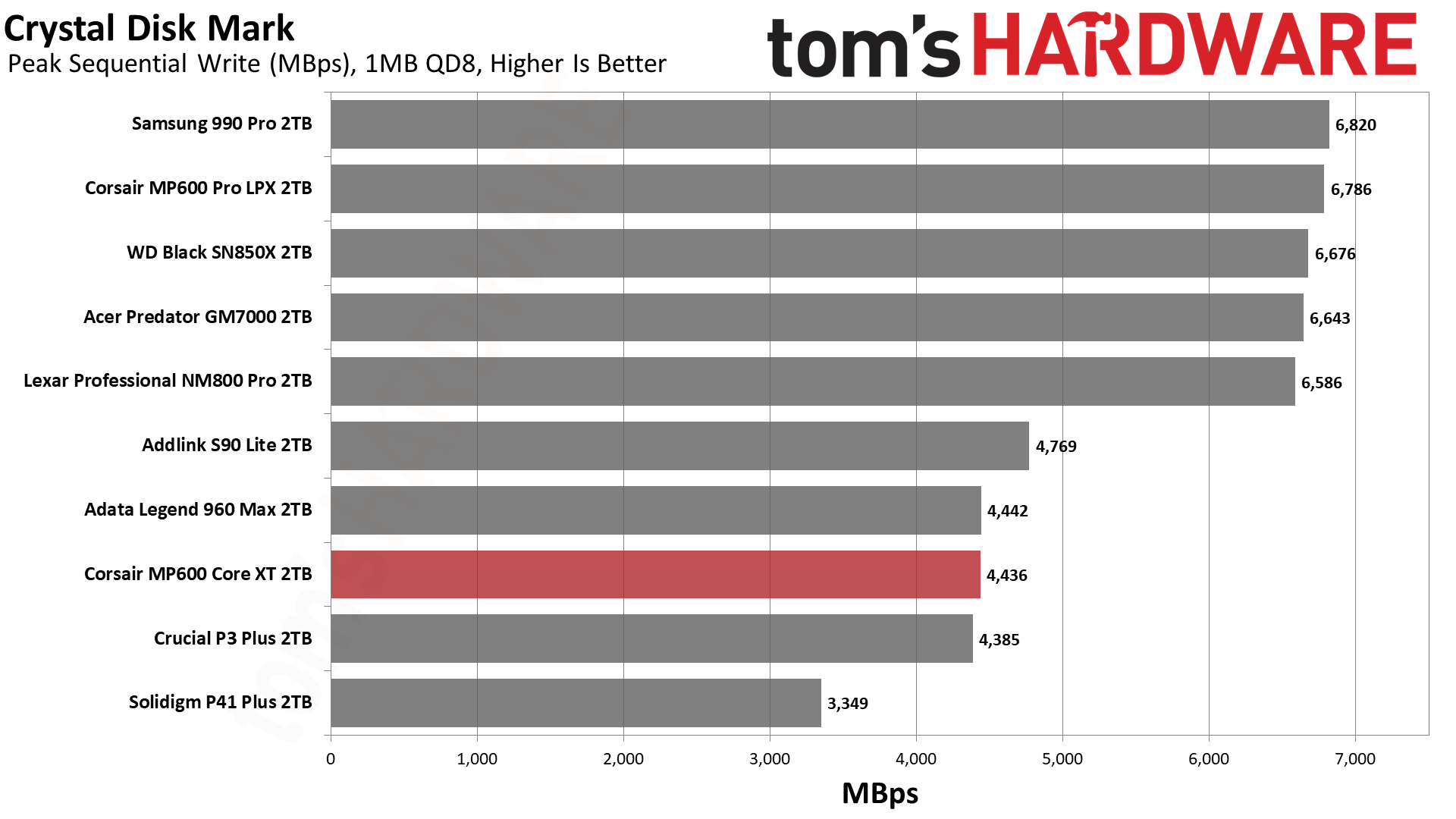
The Phison controller on the MP600 Core XT lets it do well in ATTO for sequential reads, but the limited interface speed reduces sequential write performance. This is also a factor for CDM sequential results, but it manages to beat the S90 Lite and P41 Plus while matching the Legend 960 Max.
Sustained Write Performance and Cache Recovery
Official write specifications are only part of the performance picture. Most SSDs implement a write cache, which is a fast area of (usually) pseudo-SLC programmed flash that absorbs incoming data. Sustained write speeds can suffer tremendously once the workload spills outside of the cache and into the "native" TLC or QLC flash.
We use Iometer to hammer the SSD with sequential writes for 15 minutes to measure both the size of the write cache and performance after the cache is saturated. We also monitor cache recovery via multiple idle rounds.
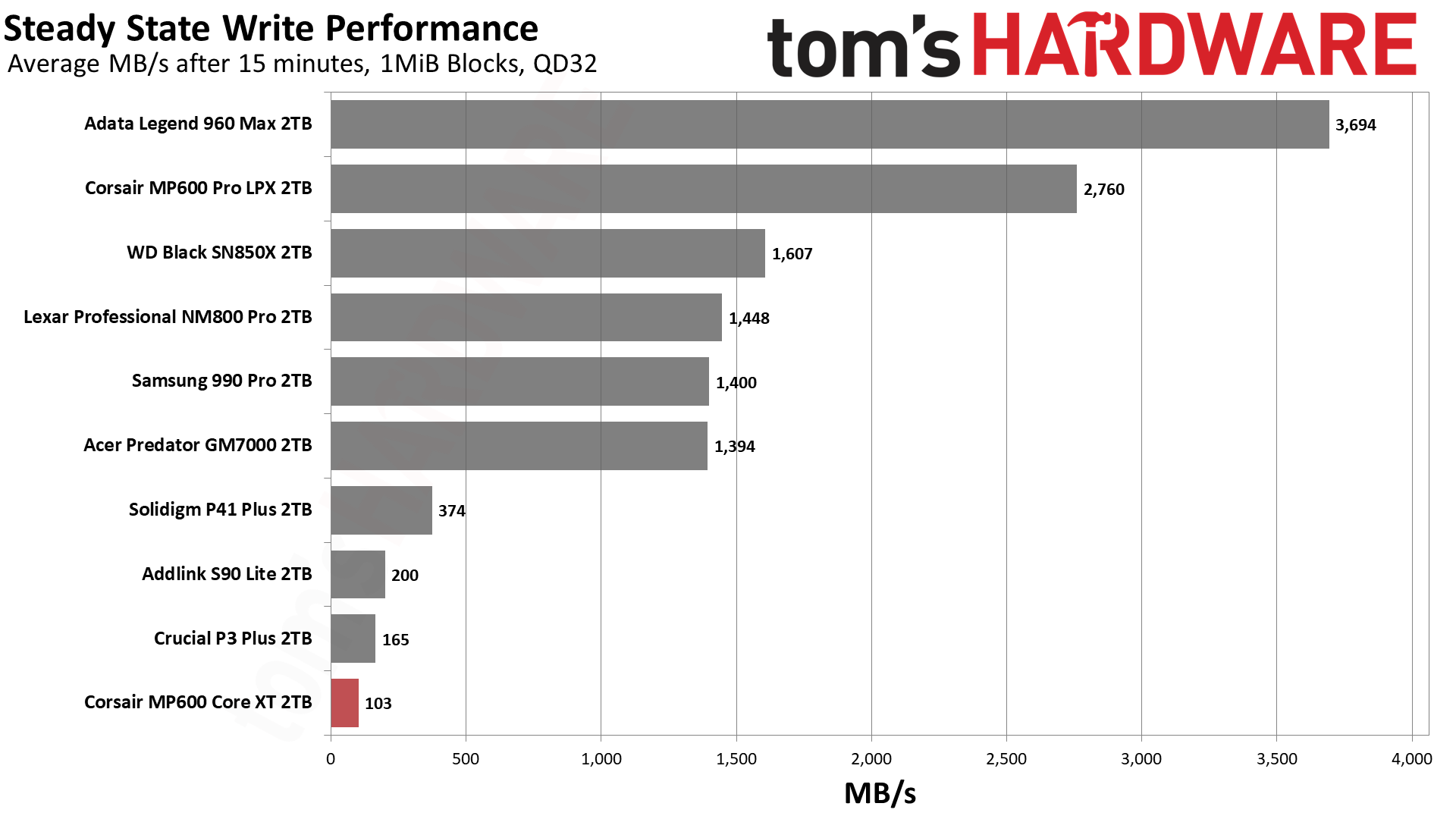


The MP600 Core XT can use all of its flash in pSLC mode, so the cache is gigantic. There’s no middle ground as it then hits a wall with its very slow folding state. This is an abrupt transition from about 4.4GBps to a meager 100MBps. The aggressively-sized cache means that the MP600 Core XT has to recover quickly.
Power Consumption
We use the Quarch HD Programmable Power Module to gain a deeper understanding of power characteristics. Idle power consumption is an important aspect to consider, especially if you're looking for a laptop upgrade as even the best ultrabooks can have mediocre storage.
Some SSDs can consume watts of power at idle while better-suited ones sip just milliwatts. Average workload power consumption and max consumption are two other aspects of power consumption, but performance-per-watt is more important. A drive might consume more power during any given workload, but accomplishing a task faster allows the drive to drop into an idle state more quickly, ultimately saving energy.
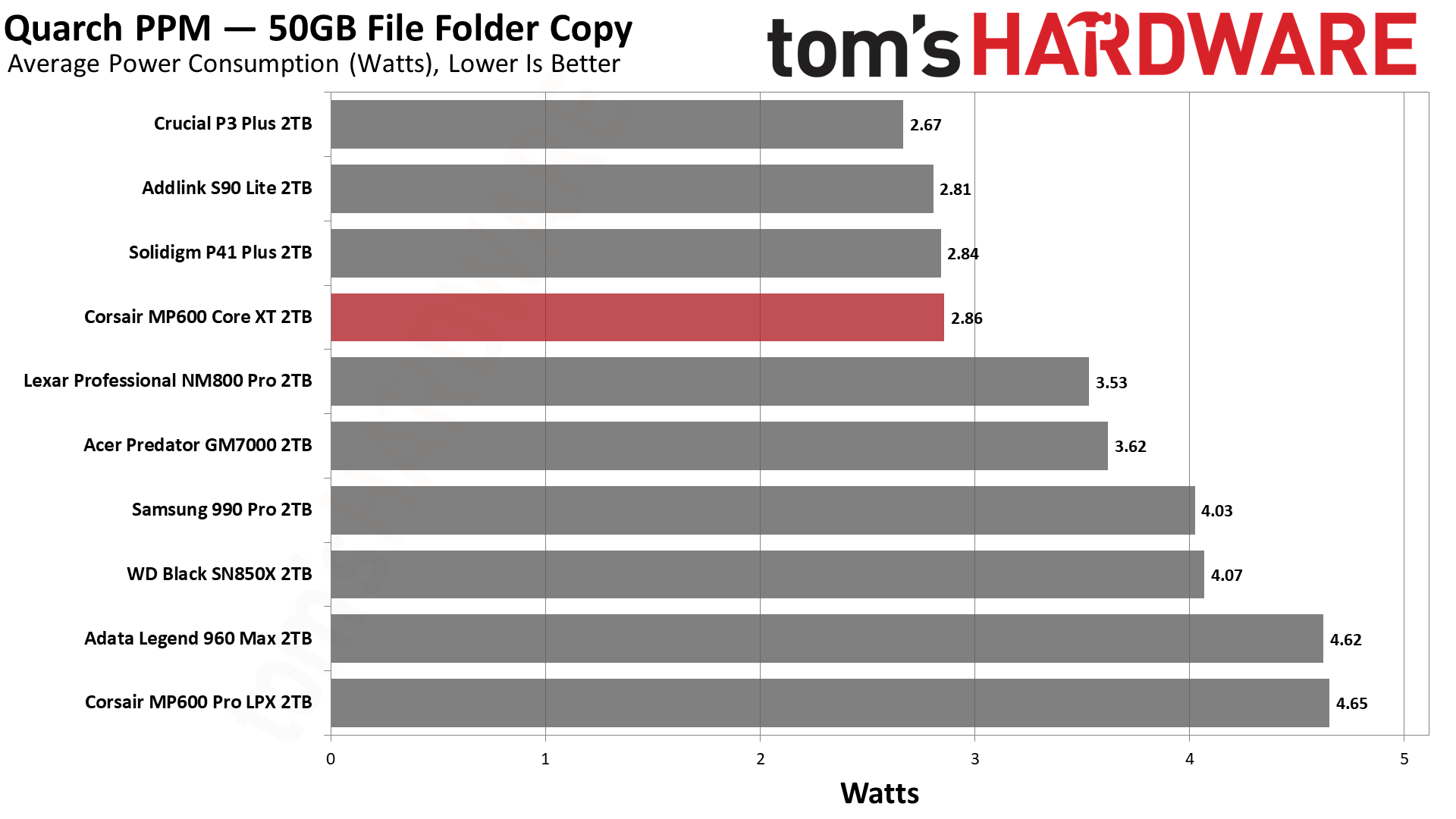
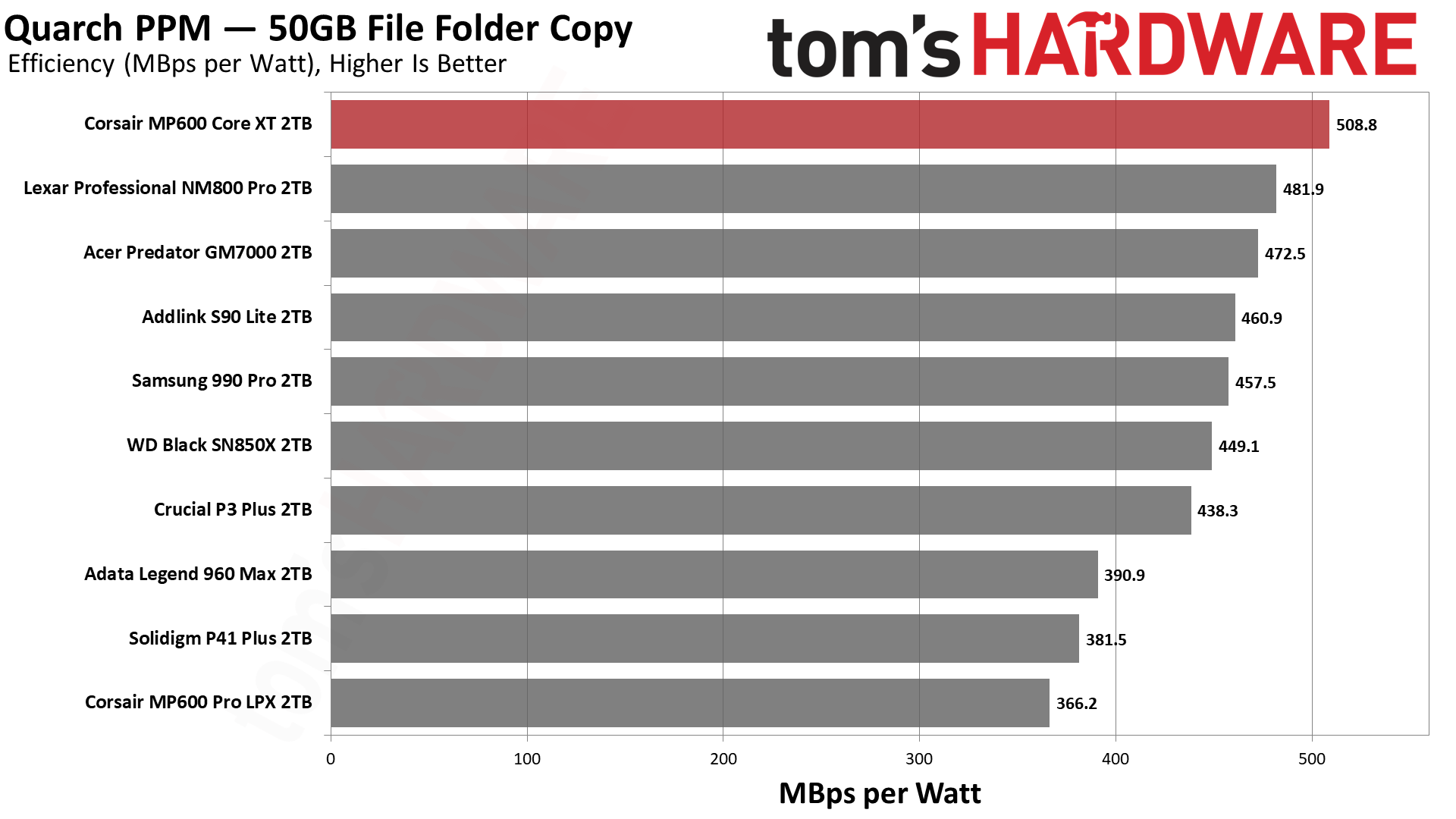
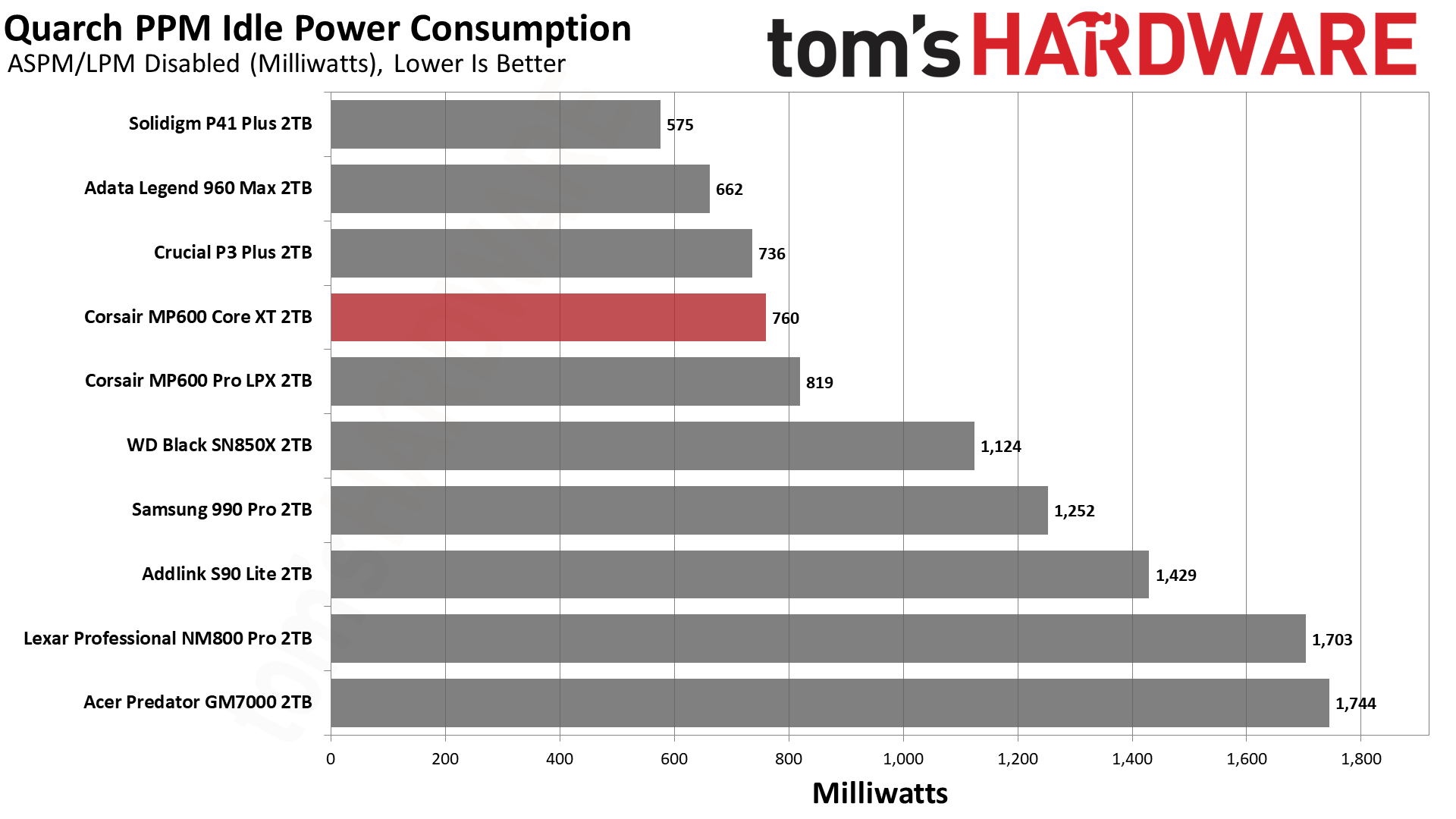

One bright spot is power efficiency. The MP600 Core XT is extremely efficient, particularly at this capacity. Its single-sided nature at all capacities makes it a good choice for laptop use, especially as a secondary drive.
Test Bench and Testing Notes
| CPU | Intel Core i9-12900K |
| Motherboard | Asus ROG Maximus Z790 Hero |
| Memory | 2x16GB G.Skill DDR5-5600 CL28 |
| Graphics | Intel Iris Xe UHD Graphics 770 |
| CPU Cooling | Enermax Aquafusion 240 |
| Case | Cooler Master TD500 Mesh V2 |
| Power Supply | Cooler Master V850 i Gold |
| OS Storage | Sabrent Rocket 4 Plus-G 2TB |
| Operating System | Windows 11 Pro |
We use an Alder Lake platform with most background applications such as indexing, Windows updates, and anti-virus disabled in the OS to reduce run-to-run variability. Each SSD is prefilled to 50% capacity and tested as a secondary device. Unless noted, we use active cooling for all SSDs.
Bottom Line
The Corsair MP600 XT is a Crucial P3 Plus in disguise, or in other words, a mid-range PCIe 4.0 SSD built around QLC to give the most capacity for the price. The MP600 XT's performance is unexceptional but good enough, particularly if you use it as a secondary storage drive for bulk data storage or as a drive for your game library. It can simply outpace older controllers and older QLC and is even an attractive alternative to many PCIe 3.0 options.
Unfortunately, the MP600 XT's list price at the time of review is too high, but the expectation is that this will come down quickly after launch. QLC flash is still generally disliked by storage aficionados, but it is making inroads, and the best place for it is inside high-capacity drives.
SSD prices have been dropping, and in particular, the P3 and P3 Plus have made it easy to get 2TB or 4TB of relatively fast storage. More competition in this space is welcome. There’s still some needle-threading required between HDDs and higher-end SSDs, but the value is pulling away from SATA SSDs — if you have the M.2 slots.
MORE: Best SSDs
MORE: Best External SSDs and Hard Drives
MORE: How We Test HDDs And SSDs
MORE: All SSD Content

Shane Downing is a Freelance Reviewer for Tom’s Hardware US, covering consumer storage hardware.
